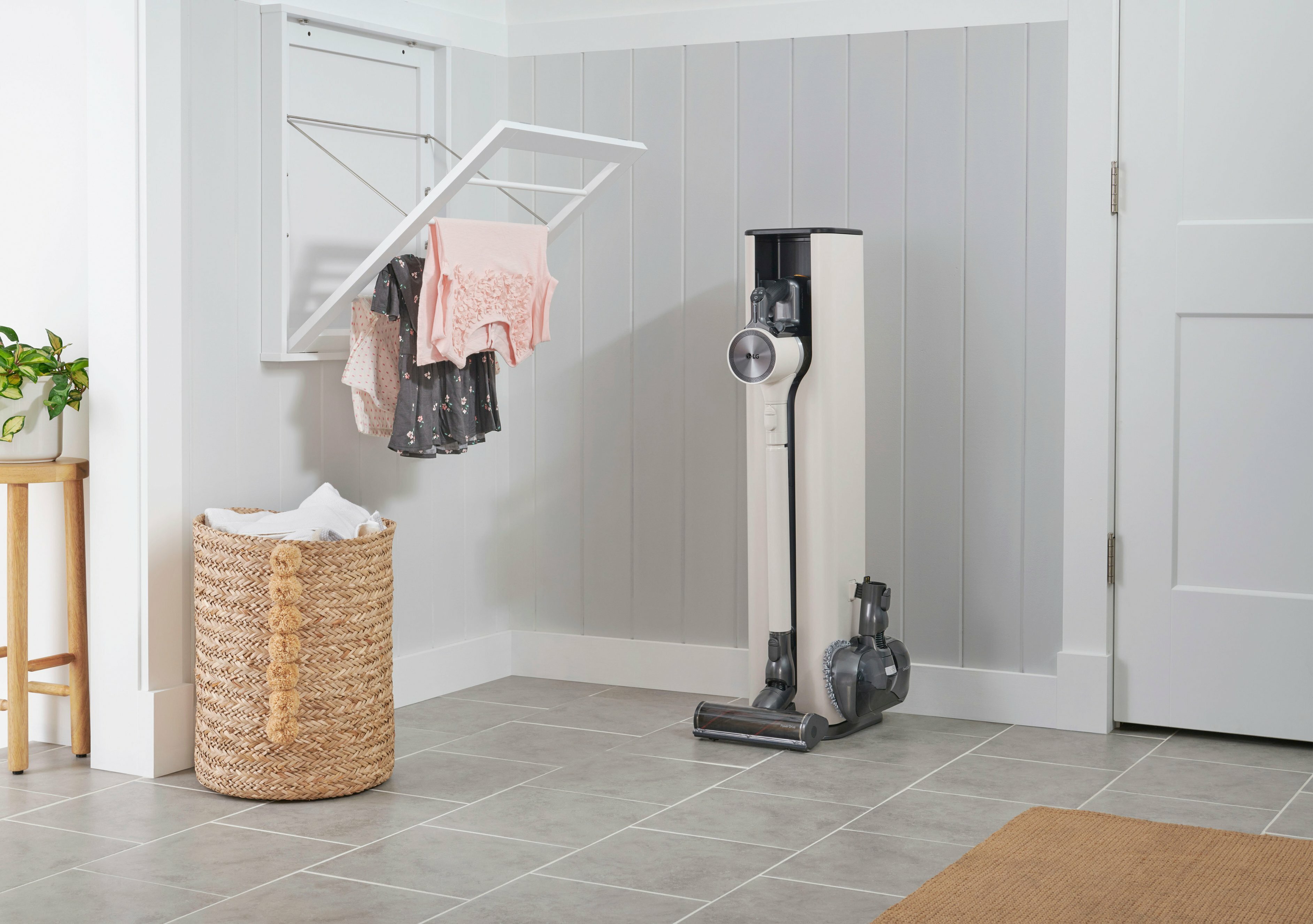
If you want something done right, you have to do it yourself.
For people who can zero in on a single rogue Frosted Flake from across the room, that’s the logic behind assigning themselves the task of vacuuming rather than letting a robot vacuum do it. Then again, vacuuming is hardly a chore when your sidekick is a blast to whip around. Just ask anyone who’s seen a Dyson at someone’s house and was overcome by the urge to ask if they can try it.
Cordless vacuums vs. robot vacuums
The convenience of not having to lift a finger isn’t always worth the cringe that comes with watching a robovac ignore crumbs under the cabinet lip or eat a laptop charger. 3D obstacle sensors and LiDAR mapping are better than guessing, even the best robot vacuums can’t match the precision of, you know, an actual human with a brain operating a vacuum manually.
Power-wise, upright vacuums are much less likely to need a second or third pass to snag everything in their path. A robot vacuum’s motor can’t exceed the three or four-inch clearance that the vac needs to scoot its whole body under furniture. The motor of an upright vacuum typically lives completely separately from the opening and roller brush and is under fewer constraints. More real estate means a bigger, better motor that creates bigger, better suction.
It also means a bigger dust bin and less frequent emptying.
Cordless vacuums vs. corded vacuums
Though corded vacs obviously make battery life a non-issue, having to charge is absolutely worth not being tethered to the wall, wrestling with knots, and dropping several F-bombs when the cord inevitably gets caught on a chair leg. (The best cordless vacuums should have more than enough juice to last for an entire cleaning session, anyway.)
Cutting the cord is especially crucial for the upkeep of tricky spots that aren’t even on a robot vacuum’s radar, like staircases or cars.
And these are not the retro bricks that your grandma lugged around the house on wheels. Ignoring the cord-free factor for a sec, stick vacuums are the moment because of their accessible design. It’s aesthetically pleasing, easy to store, and a damn delight to whip around. Most follow the same setup: a cleaner head and a motor/bagless dustbin with a trigger for your finger, connected by a long neck (the “stick”) with a circumference not much thicker than a water bottle. Minimal pieces keep these vacs between five and nine pounds, making them easy to operate with one hand or lift up to skim the ceiling.
Internal components are really what fill the pros and cons lists. Suction power and battery life are the obvious criteria, as well as modern upgrades like floor-type sensing technology.
Dyson vs. the rest
Dyson is thiiis close to being the Kleenex or Band-Aid of the vacuum world — the name everyone calls any old stick vacuum as if that’s just the generic term. Are Dysons actually worth the hype, though?
The best Dyson vacuums: A guide to the latest versions of stick, ball, and handheld cleaners
Yup, they are. Whether or not Dyson officially hatched the first-ever cordless stick vacuum, the it girl brand at least popularized the slim, zippy design. They pull two main aspects from the older, corded Dysons: Radial Root cyclone technology (serious centrifugal force created by cyclonic separators that minimize the amount of particles in the air, sending dirt and dust directly into a canister) and the iconic ball design for agile maneuvering under furniture and around bends.
A Dyson’s performance is easy to see IRL but harder to compare on paper. The brand measures suction in Air Watts (AW) while most competitors measure suction power in Pascals (Pa). Some manufacturers don’t put a number on suction power at all. Direct conversions are tricky because the metrics themselves, both of which ultimately refer to pressure, aren’t exactly directly comparable. Luckily, there’s no need to get into the weeds when the proof is in the transparent dust bin.
Here are our top picks for best cordless vacuums in 2022:
